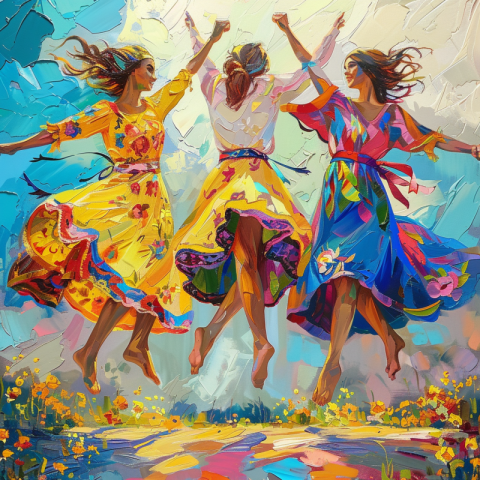
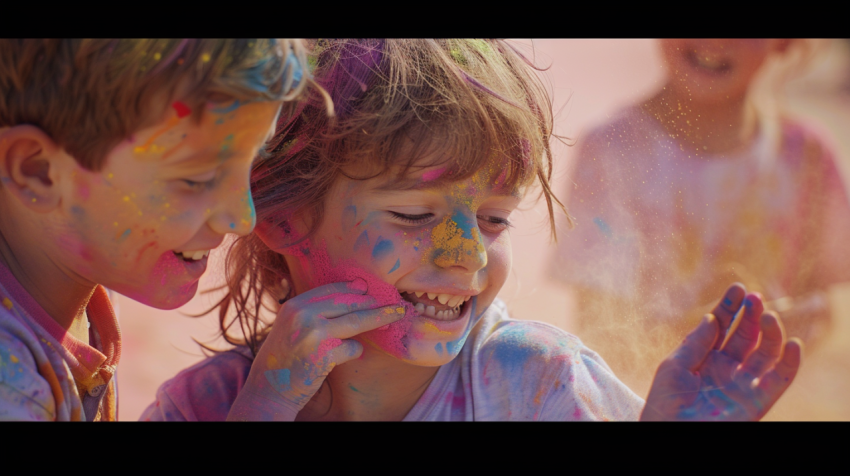

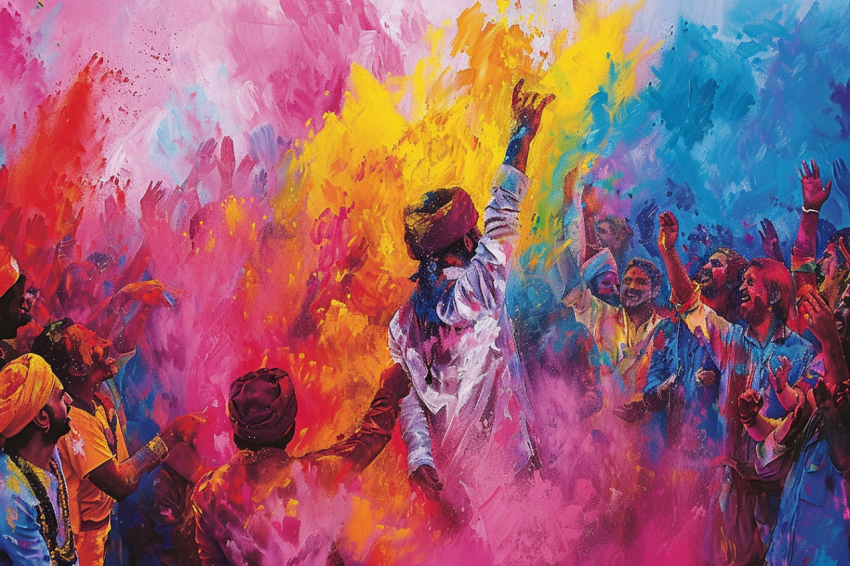
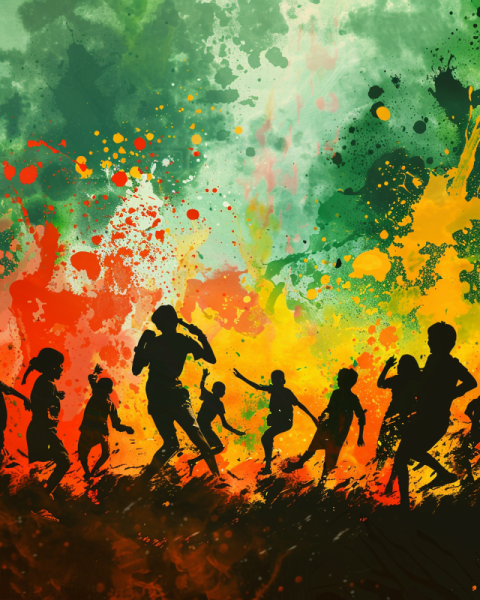




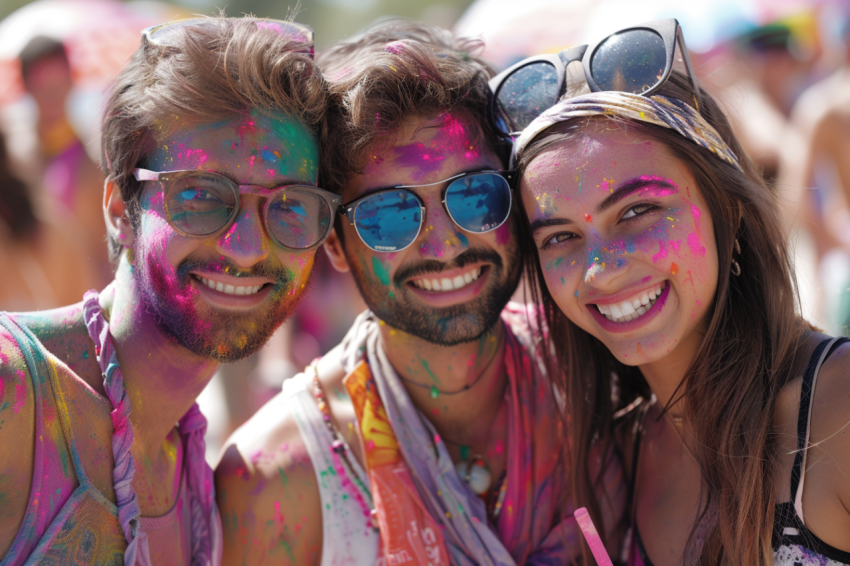


Holi: The Festival of Colors - A Celebration of Joy and Unity
Holi, the exuberant Festival of Colors, is one of the most popular and widely celebrated festivals in India and by the Indian diaspora around the world. This ancient Hindu festival marks the arrival of spring, the victory of good over evil, and is a time for joyous celebration, forgiveness, and the strengthening of social bonds. The vibrant colors that characterize Holi symbolize the blossoming of nature and the joy of life.
1. The Origins and Significance of Holi: Mythology and Meaning
The origins of Holi are steeped in Hindu mythology, with several legends associated with the festival:
- The Story of Holika and Prahlad: The most popular legend involves the demon king Hiranyakashipu, his son Prahlad, and his sister Holika. Hiranyakashipu, who considered himself a god, forbade Prahlad from worshipping Lord Vishnu. Holika, who was immune to fire, tried to kill Prahlad by sitting with him in a pyre. However, Prahlad's devotion to Vishnu protected him, and Holika was burned instead. This event symbolizes the victory of good over evil.
- The Story of Radha and Krishna: Holi is also associated with the divine love of Radha and Krishna. It is believed that Krishna, who had a dark complexion, playfully applied color to Radha's face. This playful act is commemorated during Holi with the throwing of colored powder and water.
- The Legend of Kamadeva: Kamadeva is the Hindu god of love and was burned to ashes by Shiva. He was later revived, and Holi may celebrate this event.
- A Season of Fertility and Harvest: Some also consider Holi to be a celebration of the spring harvest and fertility.
2. Holika Dahan: The Burning of Evil
The Holi celebrations begin with Holika Dahan, a ritual that takes place on the eve of Holi:
- Bonfires are lit in public spaces and in front of homes, symbolizing the burning of Holika and the destruction of evil.
- People gather around the bonfire, sing songs, and offer prayers.
- In some regions, people walk around the fire a certain number of times.
3. Rangwali Holi: The Play of Colors
The main day of Holi, known as Rangwali Holi or Dhulandi, is a vibrant spectacle of colors:
- People smear each other with gulal (colored powder) and splash colored water using pichkaris (water guns) or water balloons.
- The air is filled with laughter, music, and the joyous cries of "Holi Hai!" (It's Holi!).
- The colors are believed to symbolize the vibrant colors of spring and the joy of life.
- The playful throwing of colors is also seen as a way to break down social barriers and promote equality, as everyone is covered in the same colors regardless of their social standing.
4. Holi Delicacies: A Feast for the Senses
Holi is also a time for indulging in delicious food and sweets:
- Gujiya: A sweet, deep-fried dumpling filled with khoya (dried milk solids), nuts, and dried fruits.
- Malpua: A pancake-like dessert, often served with rabri (thickened milk).
- Dahi Bhalle: Lentil fritters soaked in yogurt and topped with chutneys.
- Thandai: A refreshing milk-based drink flavored with nuts, seeds, and spices, often associated with Holi. Bhang is sometimes added as well.
5. Holi Celebrations Across India: Regional Variations
Holi is celebrated with unique regional variations across India:
- Lathmar Holi (Barsana, Uttar Pradesh): Women playfully beat men with sticks, while men try to shield themselves. This tradition is linked to the legend of Radha and Krishna.
- Hola Mohalla (Anandpur Sahib, Punjab): Celebrated by Sikhs, Hola Mohalla is a three-day festival that features martial arts displays, mock battles, and processions.
- Dol Jatra (West Bengal and Assam): Holi is celebrated as Dol Jatra or Dol Purnima, with processions of idols of Radha and Krishna, accompanied by singing and dancing.
- Royal Holi (Rajasthan): In some parts of Rajasthan, Holi is celebrated with royal processions and elephant parades.
6. Holi Beyond India: A Global Celebration
Holi has gained popularity beyond India and is now celebrated in many parts of the world:
- Countries with significant Indian diaspora communities, such as Nepal, the United States, the United Kingdom, Canada, and Australia, host Holi celebrations.
- Holi has also become a popular cultural event, with "color runs" and Holi-themed parties being organized in various cities around the world.
7. The Social Significance of Holi: Breaking Down Barriers
Holi has a significant social dimension:
- It's a festival that transcends social hierarchies and brings people from all walks of life together.
- The playful throwing of colors helps to break down barriers and promote a sense of equality and unity.
- Holi is a time for forgiveness and reconciliation, with people often using the occasion to mend broken relationships.
8. Safety and Environmental Concerns During Holi
While Holi is a joyous occasion, it's important to celebrate it safely and responsibly:
- In the past, natural colors made from flowers and herbs were used during Holi. Nowadays, synthetic colors are more common, and some may contain harmful chemicals. It is becoming increasingly popular to use natural colors once again.
- There are growing concerns about the environmental impact of Holi celebrations, particularly the use of water balloons and synthetic colors that can pollute water bodies.
- It's important to use safe, non-toxic colors and to be mindful of water conservation during Holi.
Conclusion:
Holi, the Festival of Colors, is a vibrant and joyous celebration that embodies the spirit of spring, the triumph of good over evil, and the power of unity. It's a time to let loose, embrace the playful spirit of the festival, and connect with others in a spirit of joy and camaraderie. As Holi continues to gain popularity around the world, it's a reminder of the beauty of diversity and the power of shared celebrations to bring people together. The enduring traditions and the universal message of love and forgiveness make Holi a truly special and meaningful occasion.
Holi, Festival of Colors, Holi history, Holi significance, Holi traditions, Holi celebrations, Holika Dahan, Rangwali Holi, Dhulandi, Holi colors, gulal, pichkari, Holi food, Holi sweets, Gujiya, Malpua, Thandai, Holi in India, Holi around the world, Lathmar Holi, Hola Mohalla, Dol Jatra, why is Holi celebrated, story of Holi, Holi safety, eco-friendly Holi, natural Holi colors, Happy Holi, Holi greetings.

